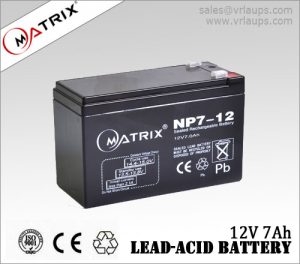 A UPS power supply is typically situated in the middle of the main wall socket and a computer that it is powering. These units are usually on the smaller side of the spectrum and relatively compact. However, the size can vary depending on where the UPS is being used and what it is being used for. Different types are available from the UPS Battery Shop.
A UPS power supply is typically situated in the middle of the main wall socket and a computer that it is powering. These units are usually on the smaller side of the spectrum and relatively compact. However, the size can vary depending on where the UPS is being used and what it is being used for. Different types are available from the UPS Battery Shop.
Usually, UPS units will feature a lead-acid battery which is also referred to as a VRLA battery. However, there have been a lot of developments in lithium-ion technology which has made them increasingly viable for powering modern UPS systems.
Lead-Acid Batteries
These lead-acid batteries are typically lower maintenance and they are viewed as reliable options with a relatively long lifespan of 5 years. The ‘VR’ inside of VRLA refers to the fact that VRLA batteries have automatically operated vent systems inside of them which control the gas buildup release at various intervals during the charge and drain cycle. This is a very important function that is set off by built-in pressure sensors. These cell type batteries perform best in ideal temperatures that are dry and that don’t fluctuate much. Therefore, they are typically seen as thriving in office and home environments.
Li-ion Batteries
Li-ion batteries inside UPS backups are usually much more compact and lightweight. These systems typically have a lot of great power management features built directly into the unit. This includes advanced features like advanced charge and even voltage balancing. A lot of the brands offering Li-ion UPS systems have longer than expected lifespans than the lead-acid batteries you will find on the market which means that they can last longer and provide a more cost effective option when you consider lifetime value. However, these systems up front are going to cost a lot more because they cost more to produce. Therefore, you will be able to save more on your initial cost by opting for the cheaper acid-based option.
Wet Cell Batteries
There is another type of battery that you can choose that is known as a ‘wet cell type.’ This battery type is less accessible on the open market because they are much more geared towards professional environments. The main reason they are so limited in target market has to do with their chemical makeup. Because of their unique chemical makeup, they are much more hazardous and dangerous if they aren’t kept in a specially designed safe-room. Likewise, they require a lot more maintenance than your average consumer-grade UPS system. You have to routinely top up these systems distilled water levels and continually monitor and calibrate them accordingly.
While this can make these systems impractical for a lot of consumers including businesses and home users, wet cells are ideal for a lot of specific use-case scenarios like powering larger-scale server centres. In these places, they really require long-term reliability above all else. Therefore, this need makes these options much more suitable for these kinds of users.
Battery Features
Along with the housing and the battery inside of the unit, these supplies usually offer a range of other features that are primarily dependent on the model that you end up buying. Likewise, the features included can rely on the overall cost of the unit in question. These features may include the following:
- On-device performance monitoring software
- Data reading functionality
- Discharge, power surge, lower voltage, and even temperature protection
- Display screen for reading out data
- Calibration interfaces
- Hot-swappable battery replacement options
- Different IP ratings.